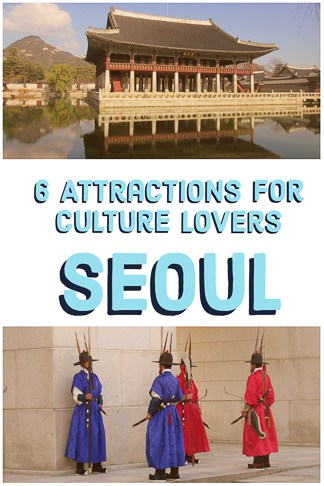
6 Attractions in Seoul for Culture Lovers in the capital of South Korea
1. National Museum of Korea
The National Museum of Korea is one of the best Seoul attractions to start learning about the country’s history and culture. It is a multi-story museum in the heart of Seoul. The museum focuses on Korean history and art. The Calligraphy and Painting and Sculpture and Craft exhibits are the best place to go it you’re solely looking to soak in Korean culture. They focus on artefacts from medieval and ancient history and features some of the most intricate and breathtaking artwork in the world. The exhibits that focus more heavily on Korean culture also have a number of cultural artefacts. They range from ceramics to artwork and help you understand the beginnings of Korean culture and how it has evolved into the 21st Century. You can easily spend two or three hours exploring the museum and learning about ancient Korean culture. Not many Seoul attractions have free admission, but the National Museum of Korea does! It is also a great place to access free wifi in Seoul! It is open everyday of the week from 10 am to 6 pm with the exception of Wednesday when it is open until 9 pm. The National Museum of Korea is the perfect first stop on your journey of learning about and experiencing Korean culture!2. Gyeongbukgung Palace
You can’t miss visiting Gyeongbukgung Palace! It is Seoul’s most popular and most visited tourist attraction, and no trip to Seoul is complete without visit it!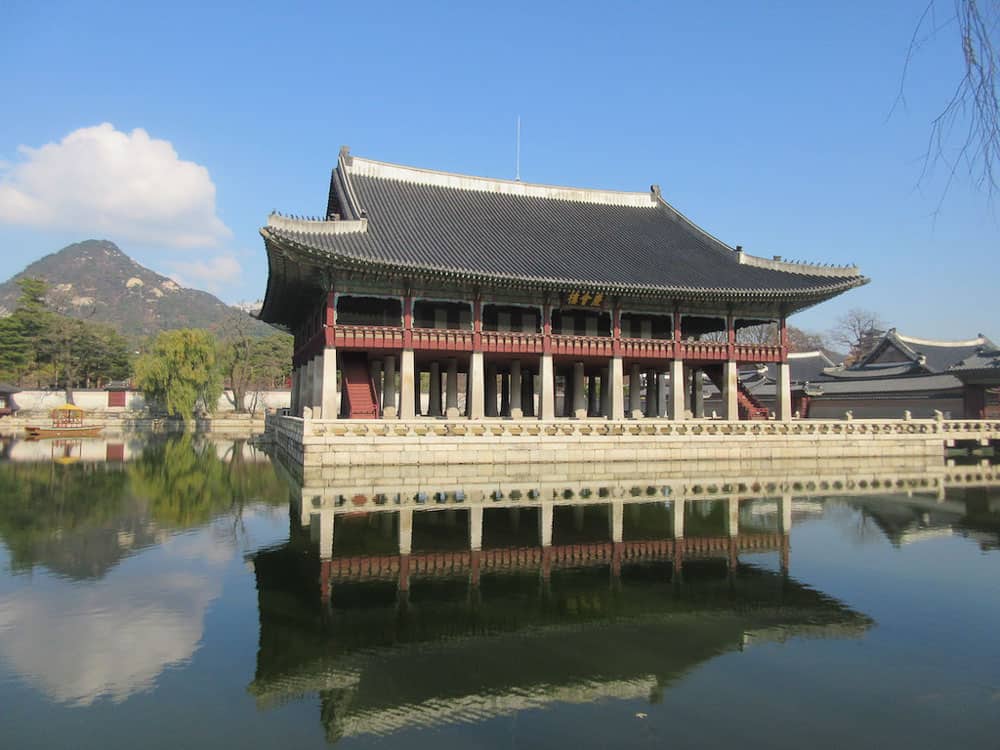
Gyeongbokgung Palace
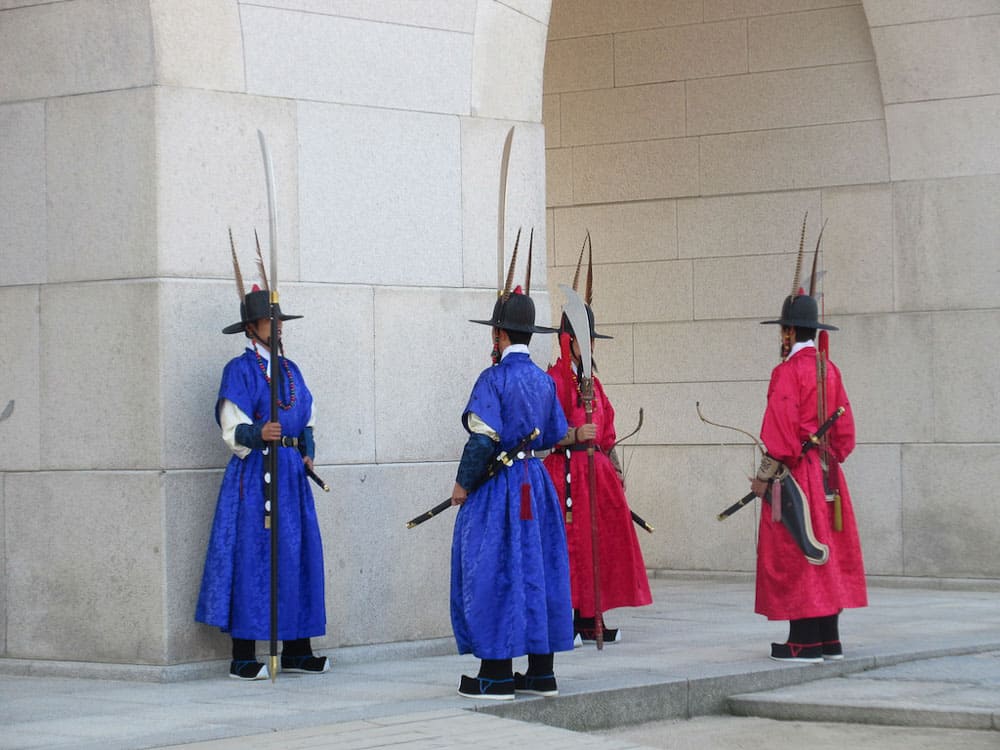
Changing of the guard’s ceremony
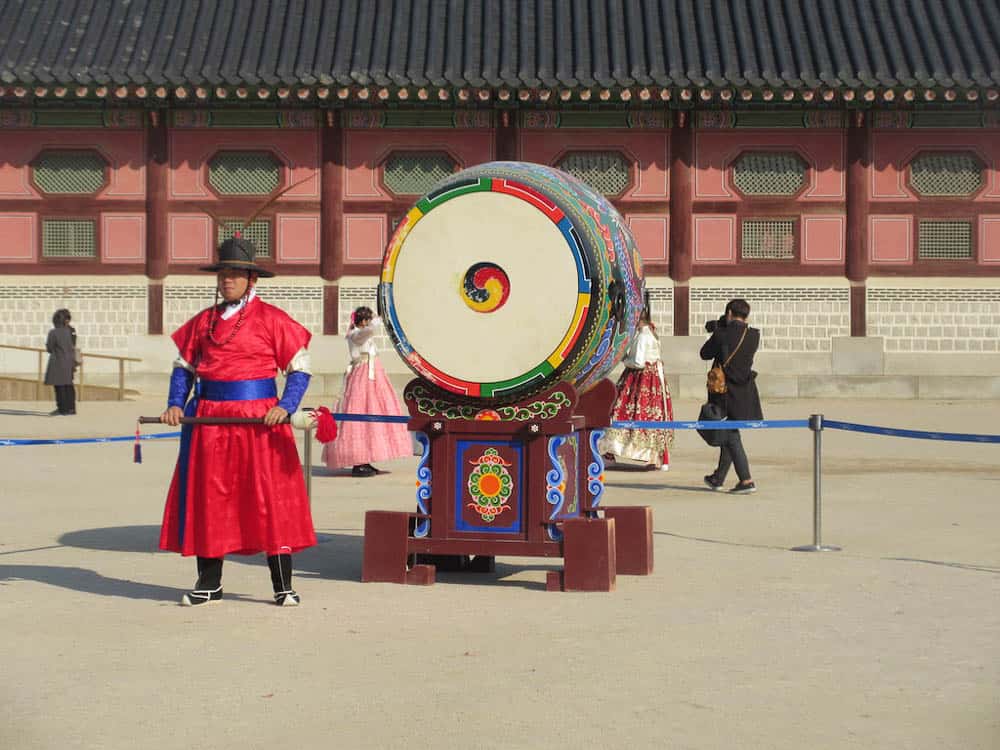
Gyeongbokgung Palace (man with drum)
3. Namdaemun Gate
Ancient Seoul was a fortified city and had eight gates. These eight gates were the only way you could enter or exit the city.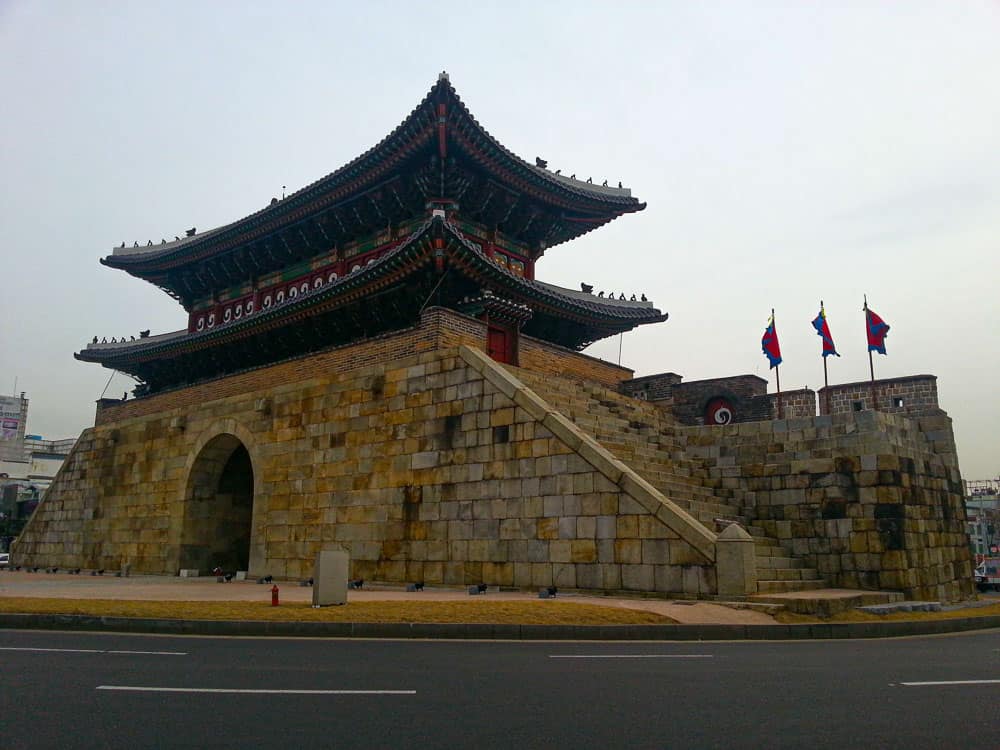
Namdaemun Gate
4. Namsan Hanok Village
This is one of the best Seoul attractions to visit if you want to experience what ancient Korea was like. Namsan Hanok Village is a small collection of houses and buildings from the Joseon dynasty that is restored to historical standards.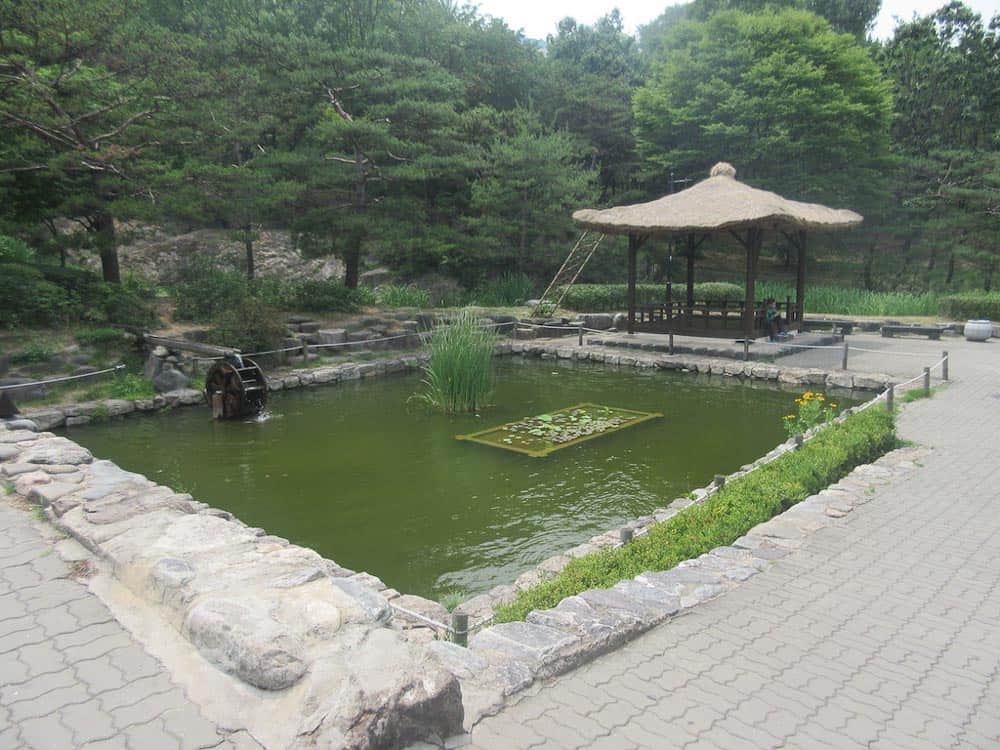
Hanok Village
5. Jongmyo Shrine
Jongmyo Shrine is one of the most special places in all of Seoul. It is the oldest and best-preserved Confusion royal shrine in the world and is an important piece of Korean history. The shrine dates back to the Joseon dynasty in the 14th Century and is where funeral services and memorials for kings and queens were held. When it was first constructed, it was the longest building in Asia and consisted of seven rooms. It has since grown in size and now has 19 rooms in total. To this day, Jongmyo Shrine is important to Koreans. You can only visit it by taking a guided tour, and there are only a handful of English tours per day. It is such a special place that photographs aren’t allowed. Once a year, the doors to the original seven rooms are opened, and people can see their interior. The doors are closed the rest of the year, and you’re only allowed to view the outside of the shrine and the surrounding gardens. Jongmyo Shrine is open Wednesday through Monday and is closed on Tuesdays. Admission is 1,000 won (approximately $1USD), and you have to take an organized tour. You can’t pre-book your tour. It is first-come, first-served, and there is a limit of how many people can go on each tour. The best to ensure you get to visit Jongmyo Shrine is to walk by in the morning to see what time English tours are offered that day. Figure out which tour you want to go on, and return to the shrine at least 15 minutes before the tour starts.6. Insadong
Insadong is the second most popular street in Seoul behind Myeong-dong. It is a pedestrian street filled with souvenirs, local crafts, and restaurants. The street was built over 500 years ago during the Joseon dynasty and is filled with charming buildings and culture. Insadong is known for its main street filled with small shops and cafés, but it is so much more than that! There are dozens of alleys you can walk through, and you always stumble on the most interesting things. During the Japanese occupation of Korea, many wealthy Koreans were forced to sell their belongings, and Insadong became the place to do that. Antique stores started popping up, and you can still find them in the alleyways. If you’re looking for a unique Korean souvenir to bring home, look no further than the alleyways of Insadong. Insadong is also home to some of the best food in Seoul. It is often overlooked because Myeong-dong is so close, but you’re missing out if you don’t eat at an Insadong restaurant. Like the best stores, the best restaurants are hidden in the alleys. They are traditional restaurants that have often been in the family for generations. You get to try authentic, traditional Korean food. Oftentimes, the restaurant still has old, traditional decorations, and you eat cross-legged on the floor. Insadong is the perfect mixture of traditional and modern. K-pop blares from 500-year old buildings, and the old and new blend seamlessly together.Conclusion
Seoul is a tourist’s dream. It has the perfect mix of modern and traditional things to do. The Seoul attractions on this list give you a taste of modern and ancient Korean culture. They help you learn about Seoul’s past, and how it has grown up to be the city, it is today. The Joseon dynasty is one of the most important periods of time in Korean history and in Seoul’s history. The majority of the cultural attractions in Seoul surround this time period. The National Museum of Korea is the best place to visit if you want to learn about medieval and different periods of ancient Korean culture. Namdaemun Market and Insagong are the best places to visit if you want to learn about modern Korean culture and life. No matter what part of Korean culture you want to learn about, there is no shortage of Seoul attractions to visit! Erica is an avid solo traveller who has been to over 40 countries. She loves spending long periods of time in each country to get a sense of the country and culture.
This guest post is written by Erica from travelswitherica
